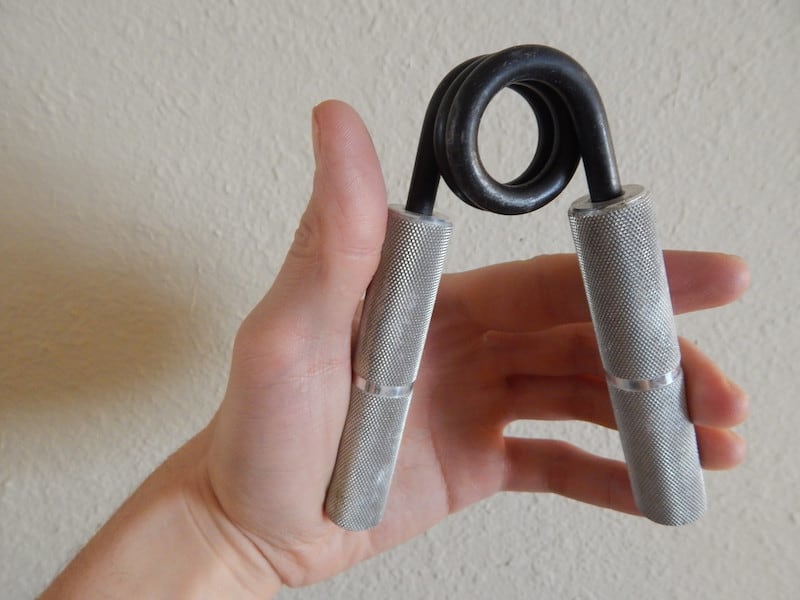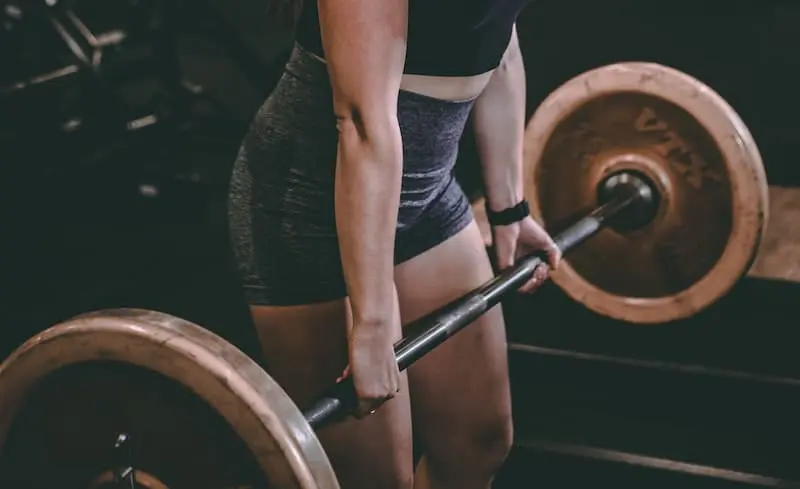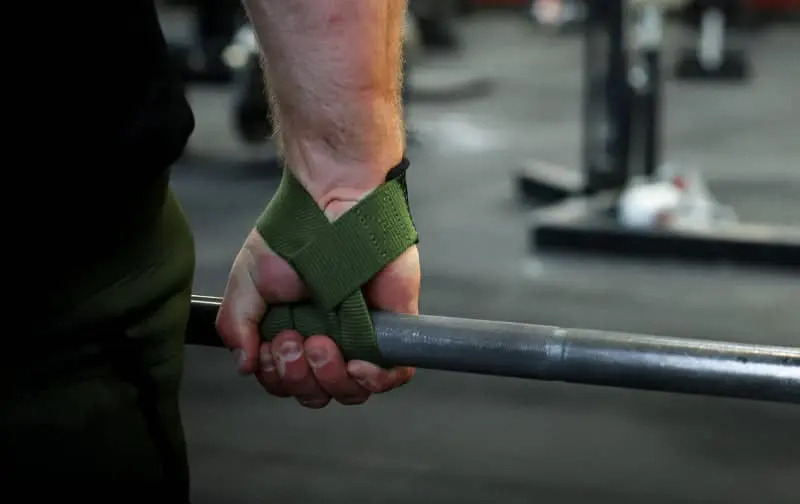
The best online fitness resource you'll ever need. We filter out the BS to ensure you meet your health and fitness goals!

The best online fitness resource you'll ever need. We filter out the BS to ensure you meet your health and fitness goals!

Many people believe that hand grippers, or grip strengtheners, are nothing more than a fad. However, they absolutely do work to improve your grip by dynamically exercising the muscles in your hands and forearms. And grip strengthening exercises should never be slept on.
We’ve all likely been bought or have bought a cheap grip strengthener in our time. You can buy them from almost any knick knack store in town or online and they will work absolutely perfectly to help strengthen your grip.
You just need to put the right program in place to make sure you are getting the best out of your $3 stocking filler.
Grip strength can absolutely be the barrier between you and reaching your potential in the weights room. Many people simply aren’t pulling their potential deadlift weight because their grip or forearms are failing before anything else.
We use our hands every single day. And grip strength is never not important. Whether it’s trying to open a particularly tough jar or carrying every single shopping bag in from the car, you need a strong grip. In the gym in particular your grip strength comes into play during every pulling movement.

More often than not it’s someones hands that give out during a deadlift. Preventing otherwise manageable pulls.
During a lateral pull down or barbell or machine row your grip plays a particularly important role in holding the weight. And whilst it’s your lattisimus dorsi that are being worked, it’s your grip that keeps the weight in your hand. If you have a weak grip, you’re potentially missing out on progression and, sadly, gains.
Your grip is determined by the strength of the muscles in your forearm, hand and fingers. All three of these work together to give your hands the strength they need to grip onto 6 shopping bags at once. Or an Olympic barbell with added plates.
Typically, we expect simply holding on to the barbell every gym session to improve our grip over time. However, this doesn’t provide enough regular or progressive mechanical tension to develop the forearms, hands and fingers.
As with any muscle in the body it requires adequate volume and resistance over time to provide a stimulus to adapt.
Many people resort to lifting straps to help get them over a lack of grip strength during particularly heavy deadlifts as their hands and forearms themselves simply aren’t progressing fast enough.

This prevents any further grip strengthening progression as the straps reduce any further need for grip strength, locking the bar in place in the hand. This is where hand grippers or grip strengtheners come into play.
Hand grippers work the muscles of the hand and forearm that–wait for it–affect the grip.
Both the intrinsic muscles (those that lie within the hand itself) and the extrinsic muscles (muscles of the forearm that continue across the wrist and into the hand) are exercised by hand grippers.
The extrinsic muscles that affect grip are flexors, which run along the ventral (palm) side of the forearm. They are the flexor digitorum profundus, the flexor digitorum longus, the flexor carpi radialis, and the flexor carpi ulnaris.
These muscles empower the grip and also flex the wrist. Flexion brings the hand closer to the forearm.
In descending order of visible size:
If you make a fist, you’ll also notice that the extensor muscles on the opposite side of the arm tense up, most notably the extensor carpi radialis longus. The extensors flex sympathetically to the flexors to prevent the wrist from moving into flexion.
This action is the body’s way of keeping the hand in alignment with the forearm when gripping.
To demonstrate for yourself, make a tight fist and flex your wrist. Note the way that feels. Then, relax the hand and make the same motion, almost as if waving goodbye. Notice how much easier that motion is now that the forearm muscles are not tightened.
You can also work the extrinsic hand muscles by doing forearm curls.
The small intrinsic muscles of the hand also benefit from dynamic work. The adductor policis runs from the middle of the hand to the thumb and is responsible for pulling the thumb toward the pinkie side of the hand.
The thenar muscles are the beefy ones between the thumb and wrist, and the hypothenar muscles are on the pinkie side of the hand. In between are the lumbricales.
Hand grippers work the grip dynamically. Dynamic load is known to be preferable to isometrics for developing size and strength in a muscle.
Certainly, practicing your grip by lifting progressively heavier deadlifts, rows, and shrugs without the aid of straps will in fact contribute to better, stronger grip. Those examples represent isometric contractions and not dynamic exercise like hand grippers offer.

Grip strengtheners come in all shapes, sizes and price points. Hand grippers do work regardless of the make or model. So if you’ve been gifted one for Christmas you can be sure they will be of use to you.
What separates the many brands and sizes is naturally the quality of the product, but also the tension they provide the user.
As with any good program or exercise, progressive overload is an important part of the muscle and strength building process. And hand grippers and grip strengthening is no different.
The best anatomical model we have for educating ourselves about the human body is… ourselves. If you were to make a fist right now you would notice how the tension of that movement works up the forearm.
Now, if you were to add some resistance to that, you would notice that it makes it a more difficult movement.
This is where hand grippers come in. They provide a resistance for your forearm, hand and fingers to adapt to.
Over time, you would need more tension to provide more adaptation and strength. And that is where the different models and brands fit in.
The technique involved in using hand grippers and grip strengtheners is fairly straight forward. There are very few teaching points to cover as the general movement is, effectively, crushing something in your hand.
As with every movement, warm ups are important. Jumping straight into tough, resistant, hand gripper could lead to issues such as cramping or undue strain.
Pick a light resistance and perform some very light and controlled crushing movements. Feeling the whole hand, forearm and even bicep work.
This will help to loosen all the joints in your hand, get your muscles used to the action and prepare you for the main session.
Moving from the warm up into the main work is as simple as swapping the hand gripper for a tougher resistance.
The teaching points are exactly the same. A controlled squeeze is important with full range of motion. So squeezing as much as possible.
Feeling the muscles in the hand, forearm and bicep and slowly releasing. Repeating the movement for as much as possible until close to failure.
Repeating this across both hands, and progressing where able, will help improve grip strength over time.
Grip strengthening programs do exist and how they are programmed is up to the athlete.
As with any accessory you don’t want to program a grip strengthening routine to failure before a pull session as this would impact the following work and actually cause a slow down in progress.
So as a rule of thumb it would be ideal to program these at the end of a pull session as part of the accessory work, or on a separate day with a rest day following it.
Perhaps even as a dedicated accessory day. The rest day is important as it allows the muscles to relax and repair meaning you’re fresh and ready to take part in the following pull day, without any soreness.
A good rep range depends on the resistance you have available. If you have a broad range of hand grippers then any rep range between 6 to 15 reps is ideal.
A few sets of heavy resistance in the lower rep range will help develop strength, where as sets in the 12 to 15 rep range will help build forearm size. Always a bonus.
If strength is your goal, 4 sets of 6 to 8 on an accessory day or at the end of the pull day twice a week will help develop that overall grip strength.
So do hand grippers work? Absolutely. Grip strength is one of the biggest constraints when it comes to deadlifts and other pulling movement progression. If you feel this is the case for you, dust of the hand grippers you got in your Christmas stocking back in 2016 and give our routine a go.